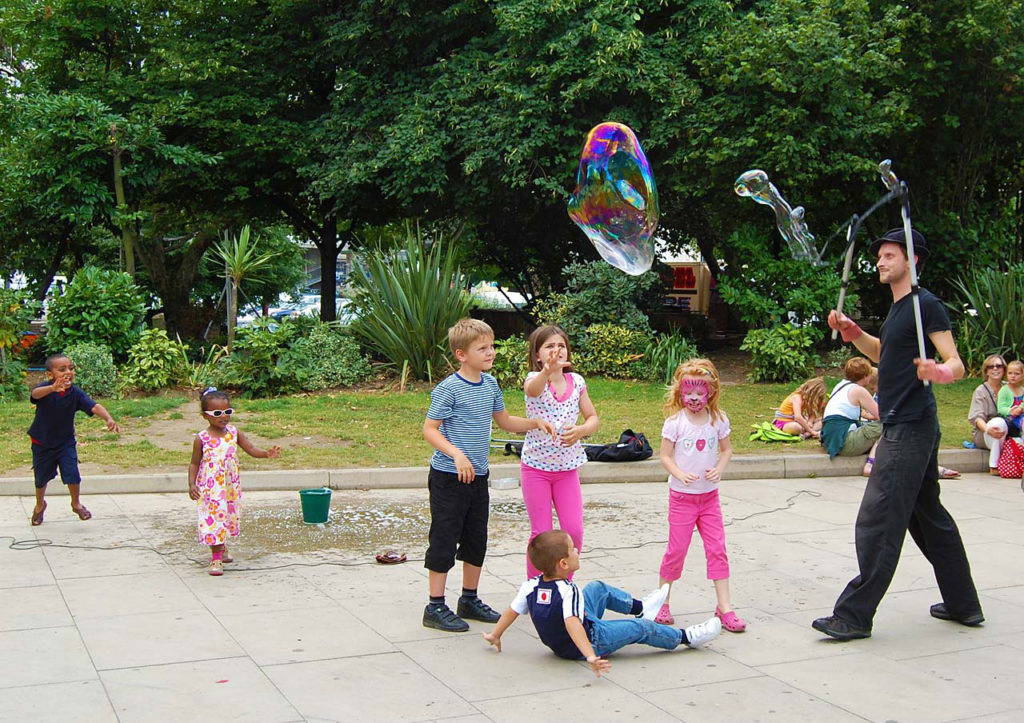A new study has found that children and adolescents taking a high dose of antipsychotics are almost twice as likely to die of any cause than children on other types of medications. Perhaps even more striking, children taking high doses of antipsychotics were more than four times as likely to die of cardiovascular or metabolic causes than children on other medications.
The study, published online in JAMA Psychiatry, was led by Wayne A. Ray, PhD, at the Vanderbilt University School of Medicine. The data was captured between 1999 and 2014. The researchers included youths between the ages of 5 and 24 years old, who were recipients of Medicaid insurance in Tennessee. This allowed the researchers to examine their medical records. In total, there were about 250,000 individuals in the study. The researchers excluded children with severe physical illness diagnoses, tic disorders, and schizophrenia. The most common included diagnosis was ADHD.

The study was composed of three groups: a control group who were on medications such as stimulants or antidepressants; a group who were prescribed a low dose of an antipsychotic, and a group prescribed a high dose of an antipsychotic.
The group taking a low dose of antipsychotics did not have a significantly increased risk of death when compared to the group taking other medications. However, children taking a high dose of antipsychotics were 1.8 times more likely to die of any cause, 3.5 times more likely to die of unexpected causes (not including overdose), and 4.29 times more likely to die of cardiovascular or metabolic problems. Deaths from suicide were no different between groups.
In total, there were 40 deaths out of the 27,354 in the higher-dose group (0.15%), compared to 67 deaths out of the 123,005 in the control group (0.05%).
Of course, there could be other confounding factors that led to this effect—something present in the higher-dose group that was not present in the control group. However, the researchers controlled for the most obvious explanations (diagnosis, medical illness, and any medication use). Additionally, after the researchers ran a sensitivity analysis, they concluded that “to explain the risk of unexpected death in the higher-dose group, the confounder would have to increase risk by 5-fold, have a 75% prevalence in the higher-dose antipsychotic treatment group, and not be present in control patients.”
The potentially deadly cardiovascular and metabolic adverse effects of antipsychotic medications are well-documented, but according to the researchers, this is one of the first large studies to examine whether children are at a greater risk of death due to these causes. The researchers write that after the second generation of antipsychotic medications was invented, these drugs began to be prescribed in younger patients for all variety of indications, such as ADHD, depression, and behavioral control—indications for which other, safer therapies might be a better option.
According to the authors,
“The study findings appear to reinforce existing guidelines for improving the outcomes of antipsychotic therapy in children and youths. These guidelines include restriction to indications for which there is good evidence of efficacy, an adequate trial of alternatives including psychosocial interventions when possible, cardiometabolic assessment before treatment and monitoring after treatment, and limiting therapy to the lowest dose and shortest duration possible.”
****
Ray, W. A., Stein, M., Murray, K. T., Fuchs, C., Patrick, S. W., Daugherty, J. . . . Cooper, W. O. (2018). Association of antipsychotic treatment with risk of unexpected death among children and youths. JAMA Psychiatry. Published online ahead of print Dec. 12, 2018. doi:10.1001/jamapsychiatry.2018.3421 (Link)















This study compares the toxicity of neuroleptics with the toxicity of antidepressants and psychostimulants, but does not tell us anything about the absolute toxicity of neuroleptics.
To get a rough picture of the absolute toxicity of neuroleptics, antidepressants and psychostimulants, the child mortality rate in this study can be compared to the overall child mortality rate.
For this we need to create a group of children roughly comparable to this one.
The children were aged 5 to 24, and their average age was 12 years old.
3 children from 5 to 9 years old (average: 7),
1 child from 10 to 14 years old (average: 12),
1 young person from 15 to 19 years old (average: 17),
1 young person from 20 to 24 years old (average: 22),
Indeed: (3*7+12+17+22)/(3+1+1+1) = 12
The groups was also 43,3% female.
US children and young’s mortality rate:
in 2015
5-24 years
12 years means age
43,3% female rate
per 100,000
age weight male female totalweight 56.7% 43.3%
05-09 3 013.2 010.2
10-14 1 016.9 012.2
15-19 1 066.6 029.1
20-24 1 129.9 046.5
05-24 042.2 019.7 032.5
Source: Death rate in the United States in 2015
Mortality rate of a group of children and young people comparable in age and sex, in parts per 100,000: 32.5
Mortality rate among children and youth in the study who used antidepressants, psychostimulants or low dose neuroleptics in parts per 100,000: 54.5. Risk of death multiplied by 1.68.
Mortality rate of children and young people in the study who took neuroleptics at high doses, in parts per 100,000: 146.2. Risk of death multiplied by 4.50.
Of course, this is a rough calculation that does not take into account any confounding factors. However, the use of antidepressants, psychostimulants and low-dose neuroleptics is associated with substantial excess mortality in children (+ 67.7%).
Report comment
I was Diagnosed with Sch… in 1980 but I found inexpensive practical Psychotherapy worked better than ‘medication’.
I was on 25 mg per month of Fluphenazine Decoanate depot between 1980 and 1984. I came off this drug in 1984 because it was disabling me. I moved to oral ‘medication’ which I reduced gradually …and I was no longer disabled.
By 1990 I was taking 25mg of Mellaril per day (only suitable for very mild anxiety). This was changed to a prescription of 25mg of Seroquel per day in 2005.
A few years later I discovered that Seroquel at 25 mg per day had no ‘psychiatric’ effect or withdrawal effect – so I stopped taking it.
I went to see a Consultant Psychiatrist in 2018 (who knew me in the 1980s when he was training) and he removed the “Diagnosis”.
Report comment
I’m so happy to hear you got the diagnosis removed finally, Fiachra.
Report comment
Thanks a lot kindredspirit.
He wrote me a letter saying that he was confident that I had never suffered from Schizophrenia.
Report comment
I would Drop the Diagnosis anyway, because its more a question of recovering from “Psychiatry” than of recovering from “Schizophrenia”.
For example a 2nd generation Caribbean man in the UK might be many times more likely to be Diagnosed with “Schizophrenia” than his White counterpart, and (many more times again) than a Caribbean man.
So the “Diagnosis” has got to be Wrong.
But once the person is in the System they become Incurable.
Report comment
I think it’s high time that doctors were simply forbidden to prescribe certain drugs to children. We’re talking about killing children here. Do we really think “advisories” are going to work?
Report comment
https://en.m.wikipedia.org/wiki/Quetiapine
“…The use of low doses of quetiapine for insomnia, while common, is not recommended; there is little evidence of benefit and concerns regarding adverse effects…”
If this is the case then the “use of normal doses” should definitely not be recommended.
Report comment
The use of antipsychotics in under 18’s is still growing at a rate of a few percent a year. It is clearly the treatment of choice if the patient reports voice hearing.
One of the problems is that misinformation really thrives in under 18 services. They will talk to parents and children separately and there is a big question about who gives consent. In law it is clear, but in practise the minor will be spun a line by the psychiatrist, and if parents ask questions it can be suggested that they are troublemakers and perhaps even to blame for whats happened. Its a ghastly conundrum and the psychiatrist gets his way, initially by claiming a softly-softly approach based on child guidelines and then saying that we really need to look at adult guidelines and max out doses. Does supporting your child mean preventing them from accessing the drug the nice psychiatrist has assured them will “get them back into life”? It’s quite simply horrible and neither child nor parent is sufficiently aware of the evidence when this is thrust upon them.
In the UK, Steve, I hope, perhaps forlornly, that the NICE guidelines put the brakes on antipsychotics in a similar way as they try to put the brakes on antidepressants. Just to buy time so the family can do research and come to terms. But when the patient decision-making is so ambiguous its always going to present opportunities for over-enthusiastic prescribing. I’m pretty sad about it and it takes real balls to push back against the system that I’m not sure I’ve always had.
Report comment
The reason some of these drugs are banned in the American Military is because fit young men (taking them) at low doses were dying in their sleep.
“Antipsychotics” are deadly above and beyond metabolic syndrome, bad diet, lack of exercise, and being middle aged.
Report comment
“We’re talking about killing children here.” So true, isn’t it just disgusting, we’ve got an industry full of hypocrites who promised to “first and foremost do no harm.” Who can’t stop forcing these neurotoxins onto children, because “it’s just too profitable.” Who are the crazy people? Pardon my disgust. Merry Christmas?
Report comment
If there are other successful Full Recovery Options available for the “most serious mental illnesses” like “schizophrenia” – then no child should be put on strong psychiatric drugs.
Report comment
I have a young autistic relative on Abilify. For at least 5 years now. His mum and grandfather say it “improves his behaviour so much!”
It makes me sad to know that his brain – which is under assault from lights, sound, etc. – will not develop normally.
It would be hard enough for the young lad to make it without taking brain destroying drugs.
Report comment
It is always interesting to get specifics on what his “improved behavior” constitutes. It is usually what the child DOESN’T do (He doesn’t yell anymore, he hasn’t hit me, I don’t have to get him from school, etc.) There is no focus at all on the child’s quality of life. “He stares blankly out the window for minutes at a time.” “He is very isolated.” “He falls asleep in class.” “His hand vibrates and twitches unceasingly.” These observations are not noted. The focus is usually that the child is less annoying to the adults around him/her.
Report comment
You’re very right Steve.
Because the child is autistic, I have not been permitted to meet him.
It would be “too upsetting” to his routine, or something. Or perhaps they are ashamed of his extremes?
Never mind that I send the child presents 2x a year from Australia to America…
The whole situation is sad, very sad, because I know what they are doing to his brain – which is probably brilliant.
Report comment
Psychotherapy proved to be a lot more effective for Dr Eleanor Longdon (in crisis) and it saved the UK millions £££.
https://www.ted.com/talks/eleanor_longden_the_voices_in_my_head/up-next
Report comment
“Children taking high doses of antipsychotics”. Now you see, right there, we have a problem. “Children” and “high doses of antipsychotics” in the same sentence has got to make an absurdist statement.
Report comment